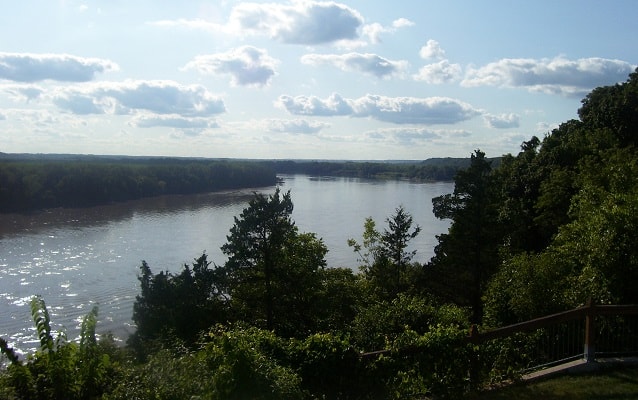Last updated: December 30, 2021
Place
Rocheport Historic District

Photo by Aimee Castenell
Information, Parking - Auto
Lewis and Clark NHT Visitor Centers and Museums
This map shows a range of features associated with the Lewis and Clark National Historic Trail, which commemorates the 1803-1806 Lewis and Clark Expedition. The trail spans a large portion of the North American continent, from the Ohio River in Pittsburgh, Pennsylvania, to the mouth of the Columbia River in Oregon and Washington. The trail is comprised of the historic route of the Lewis and Clark Expedition, an auto tour route, high potential historic sites (shown in black), visitor centers (shown in orange), and pivotal places (shown in green). These features can be selected on the map to reveal additional information. Also shown is a base map displaying state boundaries, cities, rivers, and highways. The map conveys how a significant area of the North American continent was traversed by the Lewis and Clark Expedition and indicates the many places where visitors can learn about their journey and experience the landscape through which they traveled.
On June 7, 1804, the Lewis and Clark Expedition passed through the area of modern day Rocheport, Missouri. Clark noted this area in his journal:
“. . . a Short distance above the mouth of [a] Creek, is Several Courious paintings and carving on the projecting rock of Limestone inlade with white red & blue flint, of a verry good quallity, the Indians have taken of this flint great quantities. We landed at this Inscription and found it a Den of Rattle Snakes, we had not landed 3 Minites before three verry large Snakes was observed on the Crevises of the rocks & killed . . .”
Near the mouth of Moniteau Creek Clark also observed "uncouth paintings of animals," known as manitous--a French version of an Algonquian word for spirit--which he sketched in his journal before continuing on. These petroglyphs are no longer visible.
After completing their journey to the Pacific Ocean, the explorers retraced their steps and passed through Rocheport again on September 19, 1806. The Rocheport Historic District, with its significant collection of 19th-century frame and brick buildings, is an example of a Missouri river town whose growth paralleled the fortunes of steamboat transportation on the river.
